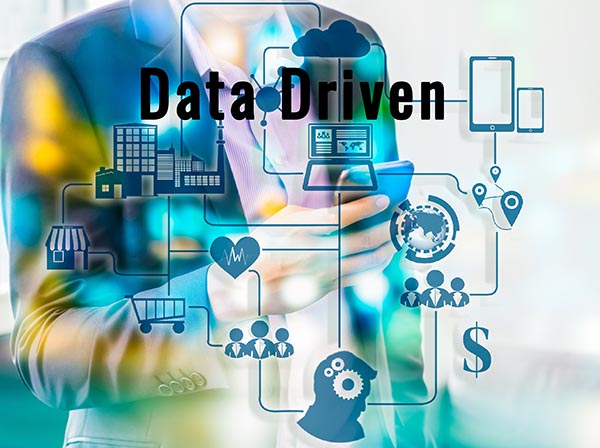The term data-driven describes a business state where data is used to power decision-making and other related activities efficiently, in real-time. For a business, reaching the data-driven state is like the difference between driving an automobile and traveling by horse. Data-driven businesses get to their destination faster and more efficiently. Data-driven characteristics include well-integrated data of good quality and algorithmic automation, including artificial intelligence (AI).
Being or becoming data-driven is a response to a major cultural and economic transformation in progress, known as industry 4.0. Each industrial revolution fires a range of new merchandise, efficiencies, and possibilities, along with disrupting existing culture, economies, and government. Steam pushed people into the first industrial revolution. Electricity into the second and Information Technology into the third. Data has and will continue to energize the fourth revolution, supporting new capabilities and economic potential. Companies recognize now that data is fuel and want to leverage it to survive and thrive in the new era.
Other Definitions of Data-Driven Include:
- A state that includes “the recognition that data must be managed efficiently and with professional discipline, through a partnership of business leaders and technical expertise.” (DAMA International)
- A situation where “data powers digital transformation rather than just informing reports and supporting business intelligence.”(Jennifer Zaino)
- “A decision-making approach combining successful data storage, modeling, and availability, in addition to technologies, such as AI, and human knowledge workers.” (Jennifer Zaino)
- A state of “leveraging existing operational and customer data as well as external data sources for both tactical and strategic decision-making.” (Matthew Baird)
- “Data is organized and examined with the goal of better serving one organization’s customers and consumers.” (Gartner)
- “A business condition that embraces and successfully manages data in all its forms to achieve digital transformation, compete on analytics or become AI-first.” (Harvard Business Review)

Data-Driven Use Cases Include:
- CEMEX, a global leaderin building materials, engaged business stakeholders to have stronger ownership of data, aligning global and local initiatives, and accelerating digital transformation. It pursued collaborative governance to keep the data at good quality. CEMEX became more data-driven as a result.
- New Orleans increased the sophistication of data used to speed up the city’s post-Katrina recovery decision-making.
- Amsterdam mobilized its data effectively to find hot spots in the city where people with depression are not receiving appropriate care.
- Executives meet with stakeholders to secure buy-in and ongoing support in treating data as an asset – not data as a byproduct, in order to become data-driven.
Businesses Become Data-Driven to:
- Overcome dependency on intuition and siloed data
- Grow the company
- Determine where to invest in new partnerships, products, and employees
- Leverage AI
- Make and act on better analytical decisions
